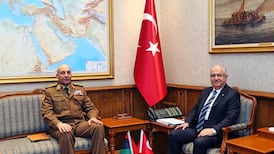The Canadian government announced on Tuesday that it had reached what it called the largest settlement in Canada’s history, paying 40 billion Canadian dollars (€28 billion) to fix the nation’s discriminatory child welfare system and compensate the indigenous people harmed by it.
The agreement in principle forms the basis for a final settlement of several lawsuits brought by First Nations groups against the Canadian government.
The deal is an acknowledgment that the child welfare system was better resourced to remove children from their families than to support them in place. The system was the product of discriminatory policies put in place and enforced over generations against indigenous communities.
Of the overall settlement, half will go towards compensating both children who were unnecessarily removed, and their families and caregivers, over the past three decades.
The rest of the money will go towards repairing the child welfare system for First Nations children – who are statistically far more likely to be removed from their families – over the next five years to ensure families are able to stay together.
"First Nations from across Canada have had to work very hard for this day to provide redress for monumental wrongs against First Nation children, wrongs fuelled by an inherently biased system," said Cindy Woodhouse, the Manitoba regional chief at the Assembly of First Nations, the largest indigenous organisation in Canada.
“This wasn’t and isn’t about parenting. It’s in fact about poverty,” she said at a news conference, adding that more than 200,000 children and indigenous families are affected by the agreement.
Of those eligible for compensation, experts hired during the litigation have estimated that 115,000 children were separated from their families since 1991, Robert Kugler, a lawyer who represented First Nations complainants on two different lawsuits, said during the news conference.
While less than 8 per cent of children under 14 in Canada are indigenous, they make up more than 52 per cent of children in foster care, according to 2016 census data.
The case was first brought to the Canadian Human Rights Tribunal in 2007 by the First Nations Child and Family Caring Society, a child welfare advocacy group, and the Assembly of First Nations. They claimed First Nations children on reserves and in one northern territory were discriminated against, because the government did not fund their child welfare and family support services at the same rate as it did for non-indigenous children.
By 2004, reports showed there were three times the number of First Nations children in state care than during the height of the era of residential schools, when indigenous children were forcibly removed from their families.
The Canadian Human Rights Tribunal, a quasi-judicial federal body that adjudicates complaints of discrimination, concurred and ruled in 2016 that the government must reform its child and family services programmes for First Nations. This included changes to the formula used to calculate funding allocations for government services on reserves, according to the tribunal decision.
But the federal government stalled, repeatedly appealing to have the case dismissed on technical grounds and failing to implement meaningful change. Over the past five years, the federal tribunal has issued about 20 non-compliance orders, according to one lawyer with the First Nations Child and Family Caring Society.
In the meantime, other First Nations groups filed class action lawsuits against the government on similar grounds. "Canada could have settled this case for hundreds of millions of dollars back in 2000, when we raised the alarm that First Nations kids were getting 70 cents on the dollar compared to other kids," said Cindy Blackstock, the executive director of the organisation that initiated the case and a professor of social work at McGill University in Montreal.
“But Canada chose not to do that,” Ms Blackstock added. “And now we are into the tens of billions of dollars and most importantly, children have lost their lives and sometimes their childhoods in the process.”
In November, Murray Sinclair, a respected indigenous judge and former senator, was enlisted to help negotiate a settlement out of court. "This is the largest settlement in Canadian history," said Marc Miller, Canada's minister of crown-indigenous relations, at a news conference in Ottawa on Tuesday. "But no amount of money can reverse the harms experienced by First Nations children."
The precise settlement terms for compensation and future child welfare reforms are still being negotiated, the government wrote in a statement, though funding to help youth who are ageing out of the child care system will be distributed as early as the spring. – This article originally appeared in the New York Times










